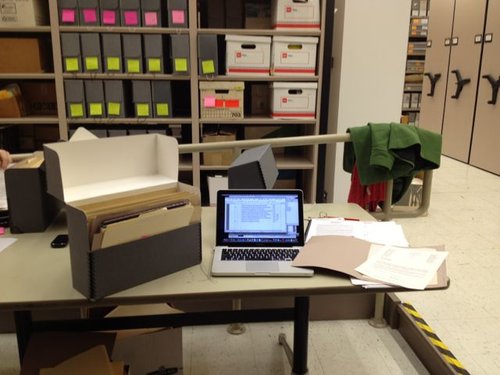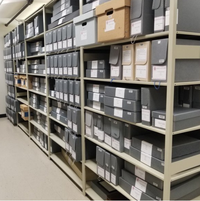The BMRC implemented a layer of protection against disruptive bot traffic. Learn more.
Providing Access to Your Collection
Archivists are not only dedicated to the collection, arrangement, description, and preservation of historically significant materials. Another important aspect of archival work is providing access to their collections for their chosen audiences. While there are many risks to providing unlimited access to archival materials, it is critical that they be made available to the viewers of your choice so that the collection’s historical narrative is told accurately. A question that archivists often ask themselves is: if the archives are not for sharing with our communities, what are they for?
There are possible concerns that come with providing open access to archival holdings, especially if you are not asking for identification from those coming to your archives. If you are only sharing your collections with trusted loved ones or community members, perhaps this is not as much of a concern for you. However, if you plan on providing access to your archives to the general public, you will want to put some measures in place to ensure that your materials are not subject to possible mistreatment or theft. This can include:

- not allowing backpacks into your reading room or viewing area,
- hiring a security guard or appointing someone as a security liaison,
- or requiring that visitors register with a valid photo identification.
However, it is important to note that these security measures will affect different groups of people in unique ways. Not everyone has valid photo identification, and security guards might police Black people and people of color differently than they would others. You should think about whom you want to have access to your collection and whether your security measures will prohibit access to them, particularly for Black and Indigenous people of color.
Seriously consider providing more universal physical access to your materials, making sure that your archival repository has ramps and elevators; captions for videos to serve those that are deaf or hard-of-hearing; voice descriptions for those that are blind; and access options for online and digital resources for those that are vision- or hearing-impaired.
Your reading room or viewing area should have set rules to ensure the preservation of your materials. Such rules often include:
- only allowing pencils and not allowing any pens or other ink that might harm materials,
- handling materials as little as possible with clean, dry hands,
- using gloves for photographs and when removing items from sleeves,
- and using soft weights or foam cradles when possible and necessary for books or fragile items.
If certain materials are particularly fragile or contain high acid levels, such as newspaper clippings or telegrams, consider photocopying or scanning them onto acid-free paper instead of providing direct physical access (ONLY when absolutely necessary as doing so too much can damage the material).
Providing access to digital collections is different from providing access to analog collections. Learn more about providing access to digital collections by watching Part Two of our Introduction to Archiving Series.
This resource was first created by Jehoiada Calvin (f.k.a. T Calvin), BMRC Community Engagement Archivist, in 2020, and edited by him in 2022.
